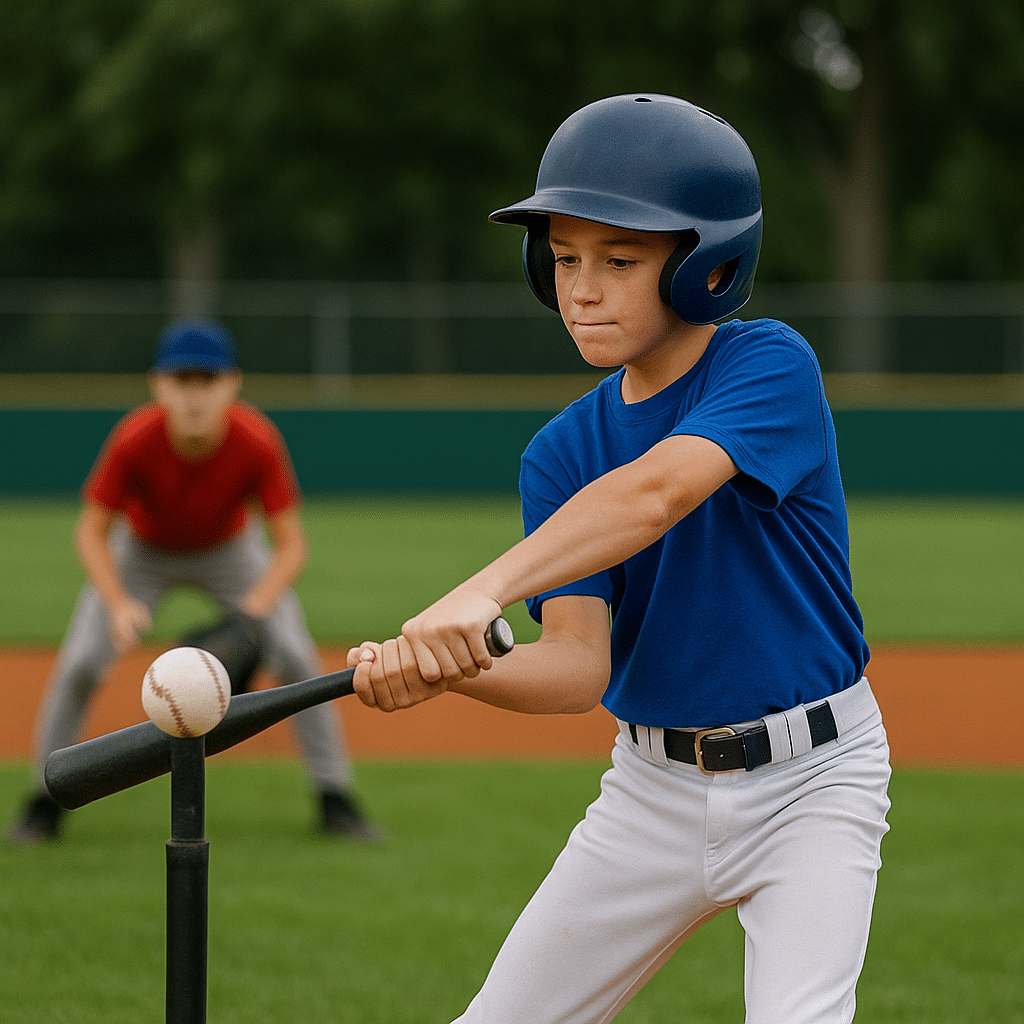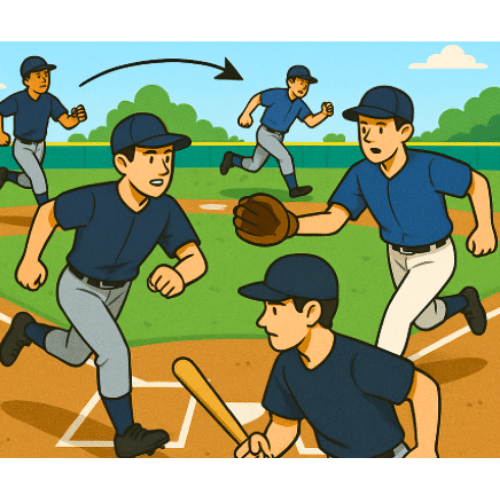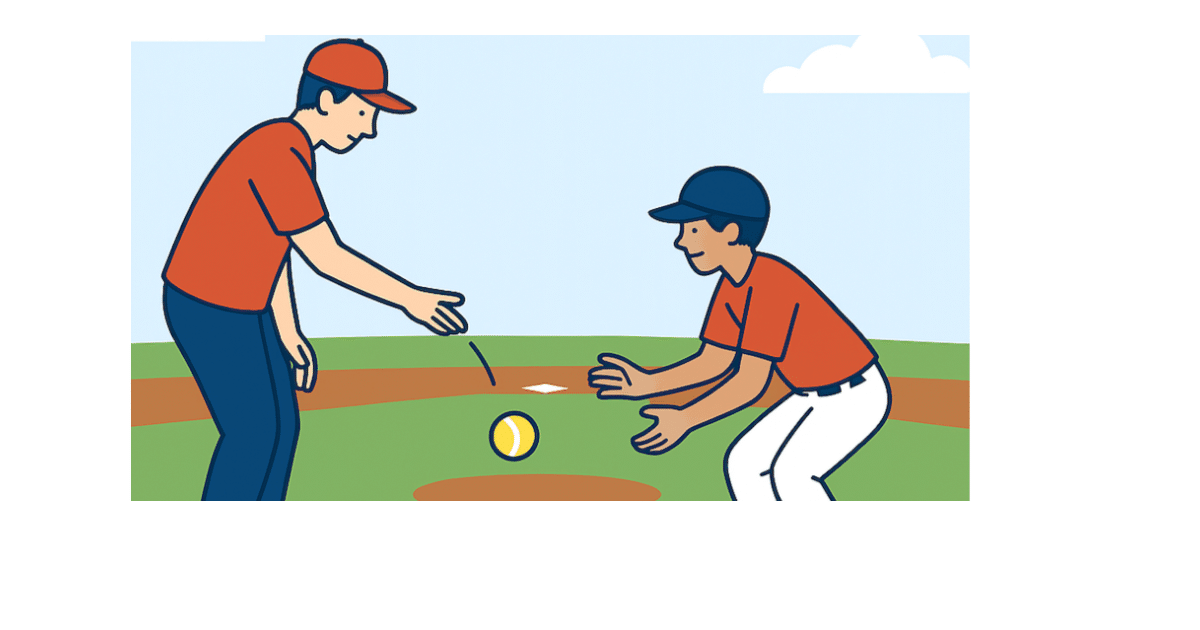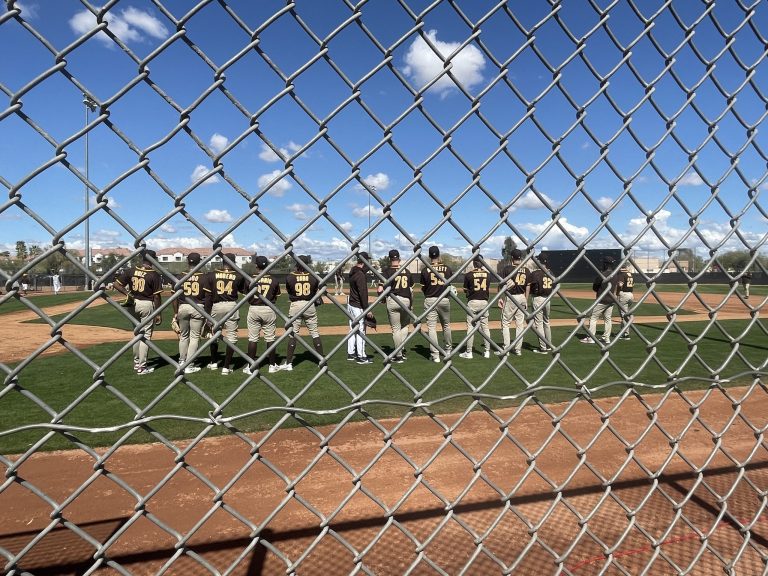IQ-Building Drills for Kids Who Zone Out
Turning “Daydreamers” Into Focused Players
Every coach and parent has seen it: a young player staring at the clouds, kicking dirt in the infield, or forgetting what base to throw to. Baseball is as much a mental game as it is physical, and for kids who tend to “zone out,” staying locked in can be tough.
That’s where IQ-building drills come in. These activities don’t just teach skills — they sharpen focus, improve reaction time, and help kids understand the “why” behind each play.
By blending fun, competition, and decision-making, these drills build the instincts that make players smarter on the field.
Here are 7 engaging, IQ-building baseball drills for 2025, perfect for young athletes who need a little extra help staying engaged.

1. Tennis Ball Reaction Drill — Quick Hands, Quick Mind
Setup: Stand about 10 feet away from the player. Hold a tennis ball at shoulder height and drop it without warning. The player must sprint in and catch it before it bounces twice.
Coaching Tips: Encourage kids to stay in a ready stance — knees bent, glove hand out. Change the height and timing of your drop to make the bounce unpredictable.
Variations:
- Drop two balls at once, only one of which the player should grab.
- For advanced players, add a verbal cue (“left” or “right”) before you drop, forcing them to react to both the ball and the command.
Why it works: The unpredictable bounce trains focus, quick decision-making, and hand-eye coordination — skills that transfer directly to fielding ground balls.

2. Situational Mini-Games — Build “What If” Awareness
Setup: Place runners on imaginary bases and hit grounders or fly balls to the kids. After each play, pause and ask, “Where’s the throw?” or “What was the best decision?”
Coaching Tips: Keep explanations short and let the kids talk through their choices. Correct gently, and then replay the same situation so they can make the right call.
Variations:
- Add a timer: kids must make the play and throw within 3–5 seconds.
- Rotate positions so each player gets to think like an infielder, outfielder, and pitcher.
Why it works: Kids often zone out when told “pay attention.” These mini-games force them to live in the moment and understand baseball’s chess-like flow.

3. Line Drive Competition — Focus Through Friendly Rivalry
Setup: Use a tee or soft toss. Count how many line drives the player can hit in a row, aiming for solid contact instead of weak grounders or pop-ups.
Coaching Tips: Stress quality of contact, not just swinging fast. Reward consistency. Encourage players to set personal records, then beat them.
Variations:
- Make it a team contest: see which side can string the most line drives together.
- Add targets in the outfield/net for bonus points.
Why it works: Kids thrive when there’s a score to chase. Turning hitting into a contest keeps them engaged while reinforcing the mechanics of a level swing.

4. Mind the Gap Fielding Drill — Team Awareness
Setup: Place two cones 30 feet apart. Split the team into two lines behind each cone. Throw balls into the “gap.” One player goes for the ball while the other backs up the play. Rotate roles after each rep.
Coaching Tips: Remind players to stay ready on every throw — no standing flat-footed. Praise kids who back up teammates properly, not just those who field the ball.
Variations:
- Use different balls (tennis ball, whiffle ball, baseball) for added unpredictability.
- Add a runner to increase urgency.
Why it works: Builds instincts for real games, where backing up throws and covering for teammates is just as important as making the initial play.

5. Target Hitting Challenges — Aim Small, Miss Small
Setup: Set up targets (cones, buckets, taped squares on a net). Assign point values for hitting them. Give players 10 swings and tally scores.
Coaching Tips: Encourage focus on form — keeping eyes on the ball and driving through the middle. Praise accuracy over pure power.
Variations:
- Make it a timed challenge: 60 seconds to score as many points as possible.
- Use different pitch types (tee, soft toss, live pitch).
Why it works: The scoring system keeps kids engaged, while aiming at targets develops precision and bat control that carries over to games.

6. Go with the Game — Position Rotation
Setup: Run short practice innings where kids rotate to new positions after each batter. Mix in grounders, fly balls, and bunts so they must react differently each time.
Coaching Tips: Keep rotations fast-paced to maintain energy. Use this drill to teach lesser-played positions (like catcher or first base) so kids understand every role.
Variations:
- Add a “mystery coach signal” — clap or whistle — that forces kids to rotate mid-play.
- Use it as a scrimmage warm-up where positions change after each out.
Why it works: Kids don’t have time to zone out — they’re constantly adjusting, thinking ahead, and learning to see the game from different angles.

7. Team Relay and Run Games — Decision-Making at Speed
Setup: Create relay races around the bases. Mix in commands like “shuffle to second,” “sprint home,” or “tag the next runner.” Make it competitive between small groups.
Coaching Tips: Keep instructions clear and mix them up to catch players off guard. Celebrate hustle and teamwork, not just winning.
Variations:
- Add a ball: one player must carry and hand it off like a baton.
- Reverse the order (run bases backward) to force sharper thinking.
Why it works: The constant changes demand mental sharpness. Kids learn to listen, react quickly, and make decisions under pressure — exactly what they’ll face in real games.

FAQs
Do IQ drills replace fundamentals?
No — they enhance fundamentals by adding focus and decision-making.
What is “baseball IQ” for kids?
The ability to understand situations, make quick decisions, and anticipate plays.
How long should these drills last?
Keep sessions short (5–10 minutes each) to hold attention.
Can these drills be done at home?
Yes — tennis ball, target hitting, and line drive competitions work great in backyards or driveways.
Are these drills only for older kids?
No — they can be adjusted for tee-ball through early teens.
How often should I use IQ drills?
Sprinkle them into every practice, not just once in a while.
Conclusion — Smarter Kids, Smarter Ballplayers
Baseball IQ is about more than knowing the rules.
It’s about awareness, quick decisions, and staying locked in no matter what happens on the field.
For kids who tend to zone out, these 7 drills bring energy, competition, and focus into practice.
They’ll not only sharpen baseball instincts but also make practice more fun — because when kids are engaged, they learn faster.
Try these IQ-building drills at your next session and help kids stay locked in on the game.







